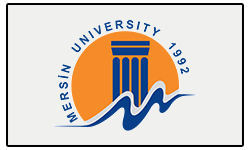Comparison of Cardio respiratory Fitness and Anthropometric Characteristics between Teenage Swimmers and Non swimmers
Abstract
Dassanayake TDMSB, Rajaratne SA and Rajaratne AAJ
This study was conducted to compare cardio respiratory fitness indicators and anthropometric characteristics of national level teenage swimmers and a group of age and sex matched non-swimmers. 50 male and 54 female teenage swimmers who qualified for the School Nationals Meet were recruited to the study as well as similar numbers of age, sex and geographical area matched controls. VO2max was predicted from heart rate at a submaximal work load using a bicycle ergo meter (Monark Ergo medic 828E). Anthropometric measurements were obtained using standard equipment and procedures. Male swimmers had a significantly (p=0.0001) higher VO2max (mean 47.9 ± 7.6 ml/kg/min) compared to male controls (mean 31.7 ± 4.5 ml/kg/min) while female swimmers also had a significantly (p=0.0001) higher VO2max (mean 38.8 ± 5.8 ml/kg/min) than female controls (mean 27.7 ± 2.2 ml/kg/min). Male swimmers had a significantly higher shoulder (p=0.002) breadth (mean 34.5 ± 4.1 cm) than controls (mean 32.7 ± 3.1 cm). The hip circumference of male swimmers was also significantly greater (p=0.015) (mean 55.0 ± 4.4 cm) than controls (mean 56.4 ± 3.5 cm). Female swimmers also had significantly greater (p=0.001) shoulder breadth (mean 38.29 SD ± 2.7 cm) than controls (mean 35.9 ±1 .9). Hip circumference showed a reverse trend, controls had a significantly greater (p=0.01) hip circumference (mean 89.6 ± 3.8 cm) compared to female swimmers (mean 87.8 ± 1.9 cm). Therefore we conclude that there are significant differences in cardio-respiratory fitness and anthropometric parameters between teenage national level swimmers and non-swimmers in Sri Lanka.



